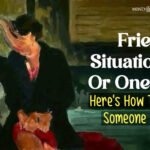In a recent study published in Comprehensive Psychiatry, researchers shed light on a concerning phenomenon, termed “psychosomatic social contagion,” emerging among children, particularly teenage girls, on TikTok.
The study suggests that the platform’s unique culture is giving rise to a “sick-role subculture,” where adolescents adopt characteristics of rare psychiatric diagnoses, such as Tourette’s, eating disorders, autism, and dissociative identity disorder (DID).
“Psychosomatic social contagion” allows teens to express extreme negative emotions within a community that not only accepts but also glamorizes these conditions.
The Rise of “Psychosomatic Social Contagion” on TikTok
Researchers, including John D. Haltigan from the University of Toronto, Tamara M. Pringsheim from the University of Calgary, and Gayathiri Rajkumar from Western University, highlight the emergence of what they term “psychosomatic social contagion.”
They argue that young girls on TikTok are identifying with and glamorizing rare disorders as a means of expressing extreme negative emotions.
This, rather than stigmatizing them, creates a sense of community and uniqueness.
TikTok’s Impact on Youth Mental Health
Unlike earlier social media platforms, TikTok’s short-form video content has a more profound impact, making it the most widely used social media site for children and teens.
The study draws parallels to the early 2010s when content promoting eating disorders and self-harm gained traction on platforms like Tumblr and Instagram.
However, TikTok’s influence is noted as more potent in shaping perceptions and behaviors.
Case Study: A 14-Year-Old’s Experience
A CNN report illustrates the impact of social media on mental health, citing a 14-year-old girl who self-identified with content creators on TikTok.
Convinced she had various diagnoses, including ADHD, depression, autism, mysophobia, and agoraphobia, the girl’s mother noted a pattern of adopting new diagnoses each week based on what she saw online.
Functional Tic-Like Behaviors (FTLBs) and Dissociative Identity Disorder (DID)
The researchers highlight specific instances, such as the emergence of “functional tic-like behaviors (FTLBs)” in teenagers after exposure to TikTok content.
Traditional Tourette’s syndrome manifests in early childhood, but FTLBs present suddenly in adolescence with more noticeable and complex movements.
Additionally, the study delves into the rise of DID, an exceedingly rare diagnosis, on social media platforms, with groups glamorizing and sexualizing the disorder.
Social Media’s Role in Reifying Psychiatric Diagnoses
Despite the rarity of these psychiatric diagnoses, especially in youth, the study emphasizes the explosive growth of online communities centered around them.
Social media platforms provide a space for self-diagnosis, where individuals can express their perceived “illness” as part of their online identity.
The researchers argue that the online environment acts as a scopic medium, allowing individuals to claim various “neurodivergent” identities without a biological basis or empirical reality.
Implications for Mental Health Stigmatization and Awareness Campaigns
The findings challenge prevailing notions around mental health stigmatization and awareness campaigns.
Rather than destigmatizing mental health issues, the study suggests that online communities tend to romanticize psychiatric diagnoses, paradoxically making individuals feel special within their virtual communities.
The researchers point to an online “neurodivergence” ecosystem where mental health symptoms are viewed more as consumer identities or character traits than genuine mental health concerns requiring professional attention.
Navigating the Complex Landscape of Youth Mental Health on Social Media
As TikTok continues to dominate the social media landscape for children and teenagers, the study calls for a nuanced understanding of the impact it has on youth mental health.
The emergence of the “sick-role subculture” highlights the need for proactive measures to guide adolescents through the complex online environment, emphasizing the importance of mental health education and responsible content creation.
In conclusion, the study prompts a critical examination of the role social media plays in shaping the mental health landscape for the younger generation, urging stakeholders to address the potential risks and develop strategies for fostering a healthier online environment.







